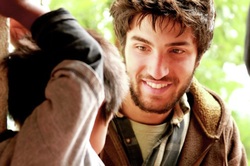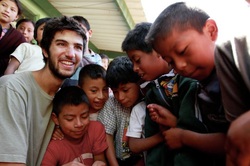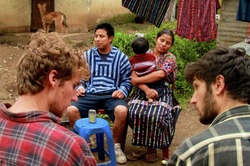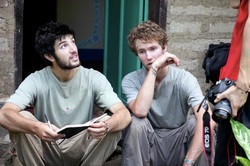I awoke yesterday to a beautiful clear sky and wandered up to Doña Maria’s with a piece of our firewood to reheat my leftover tortillas from the night before. At six in the morning, only Doña Maria and her daughter were up starting the fire and making breakfast. They greeted me warmly and allowed me to spread out my food on their stove. After five minutes I had a warm pile of revitalized tortillas and returned to our house to eat and begin our last day of final interviews.
It makes me smile to look back in my journal and see how worried I was that we would be unable to find the stories that we needed for a documentary. Being a novice to both conducting my own research and to documentary film making I had no idea where to start or what to expect. I am able to smile now because after two months we have conducted in depth interviews with twelve families with various back grounds, all at different levels of poverty. The stories that we have uncovered and the depth of which we have been able to delve into them in such a short period of time has far surpassed my initial expectations.
Without a doubt the only reason that we have had such incredible access to the financial lives of families here is because of the generosity of a couple families in the community. In the first few days Doña Maria’s thirteen year old son led us around to Grameen borrowers homes. Without his help these families never would have welcomed us as they did. We were also quickly taken under the wing of Antony and Rosa, who in age are our peers but already run a successful family. Rosa has shown us the ropes of survival while Antony has served as a personal translator for the families that only speak the local language of Kachiquel. Without their help we still would be getting “gringo prices” at the market and never would have tapped into the poorest of the poor’s stories due to the language barrier.
After eating breakfast, we spent the day at Antony and Rosa’s house filming their final interviews. When a fast moving lightning storm interrupted for a couple of hours we felt comfortable spending the time conversing and laughing over the thundering of the rain on their tin roof. Being able to feel at home in this community has lent itself to the quality of our research and to the power of my own personal experiences. I can only hope that we will be able to weave the stories that we have collected into something as powerful as I have witnessed here. This, of course, is the life goal of any documentarian.
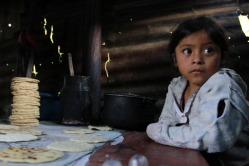 I have always been told that my great grandfather, an Italian immigrant, never made much money because my great grandmother always packed him such extravagant and delicious lunches. This appreciation, bordering on devotion, for good food runs deep through my family’s veins. Without a doubt, I bleed the same blood as my great grandfather.
Living under a dollar-a-day, which means living on tortillas, rice and beans for two months, may seem like a ridiculous choice to impose upon myself. However, through pushing myself so hard through this experience, to re-evaluate even my deepest beliefs, has given me invaluable perspective on my own life and what I am meant to do with it.
I have never considered my family wealthy nor do I think that we eat lavishly or in gross proportions but now I can fully appreciate how lucky we are. The small peak at the effects of eating such a minimal amount, in terms of the effects of the diet on my body, the time demanded to cook over an open fire and the realization that the little food we do have here would be a feast for some of our neighbors, brings new appreciation and relative value to every bite I eat.
When I return home I am still going to cook my family the dinner of Mexican Spicy Roasted Shrimp and Potato Stew with Pollo a la Miel and homemade Focaccia with crumbled blue cheese that I have been planning for a week now. However, I am also going to devote myself with every ounce of my sole to helping people like Rosa Coj Bocel and Carlos (Chino) have more than just salt and tortillas on their kitchen table each night. Finding a way to do this through the power of food would be all the better.
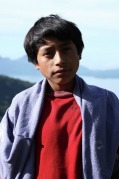 Carlos (Chino) Here is what I mean about the power of food...
Check out what Whole Foods’ philanthropic organization, Whole Planet Foundation, has been able to achieve through building up microfinance in the developing communities that Whole Foods sources their products from. They also funded our project so I guess I am already one step closer to my life goal of fighting poverty with good flavors.
...And yes for those food lovers out there here are the recipes for the dinner I’m making for my family (from some of my favorite blogs). Eat well and do something for those that can’t!
Mexican Spicy Roasted Shrimp and Potato Stew – The Spiced Life
Pollo a la Miel – The Spiced Life
Focaccia with Bleu Bheese and Caramelized Onions – What We´re Eating
Sorry no real post today but the interviews continue to blow my mind as we come closer to the end of our brief visit in this incredible community. I got hit hard by something this weekend but will spare you the details. If you need me I'll be curled up on our mat with my friends, las pulgas.
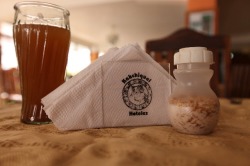 Through our research we have begun to uncover some of the creative ways the poor save money. In an unpredictable world with unreliable income it is hard for many people to save up large sums of money that are necessary to pay for large costs such as weddings or even debt. The poor have very little access to financial tools that we use to generate lump sums such as a pension, loans or an education plan. However, the poor are creative with their money and in many places informal mechanisms have been put together to raise the lump sums they need. We have found this to be true here in Guatemala as well.
Anthony, a twenty four year-old hotel worker was part of a savings group tailored to create the lump sum he needed. The group was a collection of twelve employees that all worked at the same hotel, Hotel Kachiquel. Every month each member gave the organizer of the group Q100. The grand sum of Q1,200 was then given to one of the group members. The order that the money was given out was determined by a random drawing of numbers out of a hat. Each member continued to pay the monthly Q100 until every member had received the lump sum of Q1,200. Once the year cycle was over the savings group disbanded and all of the members were happy to get their single lump sum.
This system of saving is known as a “RoSCA,” or rotating savings and credit association. The authors of Portfolios of the Poor found this system of saving all over the world. There are many variations on this method, each slightly different in structure and use but all serving the purpose of creating useful lump sums. A RoSCA is a great tool because it provides pressure from other members that helps the members to pay on time and eventually provides a lump sum without another organization skimming off a profit on the side. RoSCAs are also custom made to meet the needs of the individual’s cash flow because it is created by the members themselves. However, there are certain limitations with these informal instruments. A well functioning RoSCA can turn sour when a member cannot pay on time. Instead of a large organization taking on the risk, the members themselves are directly affected. If you are one of the last to receive the money then you have to hope the rest of your group don´t lose the incentive to pay their part after they already received their lump sum.
Anthony´s RoSCA worked well because all the members received paychecks at the same time each month from the same hotel where they all worked. However, even in this group we found out that the woman who started it had rigged the system by pretending to pull out the number one, when she really had it in her pocket. She did this so she could pay off a debt that she owed at the time. While this did not hurt the other members it does show how corruption is a reality when there is no reputable institution setting things up.
Microfinance has taken this concept of social pressure to pay for a useful lump sum but instead of providing the lump sum in the middle of the payments it provides it at the beginning. This is the same thing as if Anthony was the first to receive the RoSCA´s payment because in essence he is be paying off a loan with his monthly Q100 installments. While MFI´s do charge interest they are also reliable, cover risk of default and can provide varying sizes of loans that can fit the cost of the individuals need.
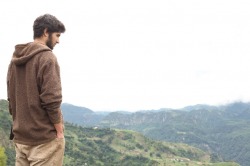 Yesterday we made our way back to Tierra Linda to do more intensive interviews with the three borrower families that we had spoken to in the first couple of weeks. (For more information on our methodology see Chris´s most recent blog post Research Methodology). Unfortunately, when we arrived at the first two borrower´s homes we found out that no one was home and that both had thought the meeting was for the next day. Frustrated because of the lack of interviews we headed to the third home down the road. We had little hope for this next story because the initial interview had yielded very little. However, this interview turned out to be one of the most eye-opening so far. The difference between the stories that we are getting now and what we found initially is dramatic. Having the time to come back again and again has opened many doors for us.
Ujemia and her husband greeted us warmly and we sat down for a filmed interview under their massive avocado tree. We knew that Ujemia had been borrowing from Grameen since 2007 and that she generally likes the service. However, the interview took a major turn when we began to ask about the recent Hurricane Agatha´s effect on the household. In the last interview Ujemia had said that they had lost a little land. The “little” land turned out to be 75%-85% of their total crop. Due to the torrential rains of the hurricane that happened two months ago, Rio Pana (the major river in the valley) swelled violently, washing acres upon acres of farm land into Lake Atitlan.
Tierra Linda and the dry river bed of Rio Pana Ujemia´s family is currently living off savings from their last harvest and occasional work that her husband can find as a laborer for other farmers. If the family exhausts their savings without the future profit of crop sales they may not be able to sow new crops unless they sell off valuable assets. This is exactly what the Portfolios of the Poor speaks about, “Where financial tools are not available, the result can be emergency asset sales; in the worst cases, those sales strip households of them means to earn future income, triggering a downward spiral toward destruction.”
Unfortunately, there are very few financial instruments available to Ujemia and her family. However, Ujemia’s next Grameen microfinance loan of Q4,000, which she will have access to in the next few months, may save them from selling off their most precious assets. With careful planning and budgeting Ujemia’s family may be able to recover from this devastating disaster.
While the intensive interviews have been eye opening they have also been difficult. Delving into the extreme poor´s lives can be an overwhelming process of trying to cope with how much they suffer and my inability to help immediately. Hopefully through these experiences I will learn to harness this feeling in order to devote myself towards finding my own sustainable way to give back.
“The portfolio approach shows the power of well thought out partial solutions… it is not necessary to solve entire problems in order to improve the well-being of poor communities.”
- Portfolios of the Poor
The Portfolios of the Poor and our own research in Guatemala have shown us the power of financial tools such as microfinance. While these are not total solutions to poverty, the poor have an incredible ability to combine financial tools in order to survive. At times it is more important to keep tools simple, reliable and flexible instead of trying to create services that provide comprehensive coverage. This is one of the things that I will take away from my experience here and will try to apply to my future endeavors, be it social business or another area involved in development.
An area that could be further adapted to meet this principle is insurance coverage that is easy to understand, has low premiums that fit the poor´s cash flow and delivers payments quickly. This would be hugely beneficial even if the plan did not provide the full amount needed in an emergency.
Below are some links to great work being done by my favorite MFI´s that are providing health insurance to their borrowers.
Pro Mujer
https://promujer.org/index.tpl?&ng_view=39
Jamii Bora
http://www.jamiibora.org/health.htm
Grameen
http://southasia.oneworld.net/todaysheadlines/grameen-health-partners-leading-medical-care-providers
http://www.grameenhealth.org/about.html
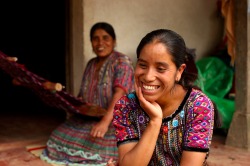 We are half way through this crazy adventure and I am beginning to realize that it is only going to get more intense and meaningful for me. These past few days have been a buzz of activity which we have managed to cram into our daily routine. We still have to devote three hours to cooking everyday but for the most part we know what we are doing. Learning to survive is no longer our central concern.
We have also moved on from our initial interviews and have chosen eight families to film and research. The few in depth interviews we have done have already began to reveal a level of complexity and hardship that I have never understood before.
Last Saturday we joined Rosa Cos Bocel at the local elementary school, the same place where we teach English classes during the week. Each Saturday she teaches a class of twenty women over the age of 15 how to speak Spanish. However, it quickly became apparent that no one was going to come that Saturday. Watching her I could tell that she was deeply frustrated and hurt that the women had chosen to forgo the free education that she was providing. We found out later that they had all gone to a meeting to pick up free fertilizer from the government. From watching her I quickly assumed that she was one of the most educated people we had talked to. She clearly had an appreciation of education that few others have in this community.
After the disappointment of the failure of the morning class, we followed her back to her house where we conducted the first of our in depth financial diary interviews combined with filmed background questions. I quickly found out that Rosa, who is a twenty year old single women that lives with her family, had to drop out of school in sixth grade to work.
Rosa´s family is extremely poor. She spoke about times in her life when all they had to eat was salt and tortillas. She explained they were now fortunate enough to have rice with their tortillas three times a week, beans with their tortillas four times a week and chicken once every eight days. When I learned that her brother and father both worked for a construction company I was immediately stuck at my core with a new sense of understanding. For the past four summers I have worked for a local construction company. Knowing from experience how hard construction work is I can´t imagine only eating salt and tortillas. I barely have energy to manage our daily activities in Peña Blanca from our relatively better diet of rice, beans and lard.
However, Rosa hasn´t let poverty get in the way of her dream of becoming a nurse. She has put herself through three more grades by studying on Saturdays and has started teaching the Spanish classes this past year.
She has done all of this while providing her family with the help of a microfinance loan for a weaving business that her and her mother have started. Had the help of this loan come seven years earlier I wonder if Rosa could have graduated highschool on time, like her brother did this past fall? I can only hope that Rosa is able to pursue her passion for education but our interviews are quickly revealing a level of poverty in this community that far surpasses our initial estimates.
This is a photo of Chris and I starting our first recorded interview with Antony and Rosa. As of this week, we have chosen the families we will be conducting in depth interviews with.
“We have seen that the world of informal finance is accessed through networks based on kin, community, and workplace. That is not always good news… Informal deals are rarely private, and exposure to the public gaze can cause much social discomfort, a nonfinancial cost of informality.” – Portfolios of the Poor
Waking up this morning I had a terrible feeling in the pit of my stomach. If we didn´t draw a high number from the hat we wouldn´t have enough money to buy food at the market. In the past four days we picked dismally small numbers, bringing in an income that just barely allowed us to buy the firewood we needed to keep our cooking fire going. Even with the money we had saved from the last market trip, we still wouldn´t have enough to buy the bare minimum of rice and beans to sustain us for the next three days. If we didn´t bring in some money then we would have had to look to last resort options to tied us over until we could get more funds.
Our only real alternative would be to borrow food or money from the few friends we have in the community of Peña Blanca. I´m sure they would have gladly given us what we needed but even thinking about asking for money left me feeling embarrassed. This experience made me appreciate what it must feel like to lean on family members in times of need. This is exactly what The Portfolios of the Poor authors explained through the stories of the families they followed. While interest free loans from family and friends may seem like an easy alternative, the nonfinancial costs and social discomfort often makes it not worth it.
Luckily, Sean pulled a high number from the hat and we were saved from having to face the embarrassing task of asking for help from our friends.
|




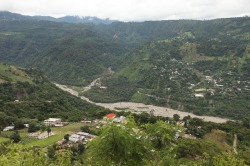

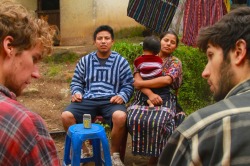
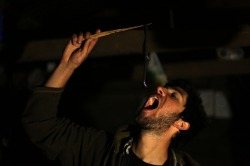
 RSS Feed
RSS Feed